Machine learning derived development and validation of extracellular matrix related signature for predicting prognosis in adolescents and young adults glioma
- PMID: 40774998
- PMCID: PMC12331974
- DOI: 10.1038/s41598-025-13547-6
Machine learning derived development and validation of extracellular matrix related signature for predicting prognosis in adolescents and young adults glioma
Abstract
The mortality rates have been increasing for glioma in adolescents and young adults (AYAs, aged 15-39 years). However, current biomarkers for clinical assessment in AYAs glioma are limited, prompting the urgent need for identifying ideal prognostic signature. Extracellular matrix is involved in the development of tumors, while their prognostic significance in AYAs glioma remains unclear. By an integrated machine learning workflow and circuit training and validation procedure, we developed a machine learning-derived prognostic signature (MLDPS) based on 1,026 extracellular matrix-related genes and 3 AYAs glioma cohorts. MLDPS exhibited robust and consistent predictive performance in overall survival and could serve as an independent prognostic factor for AYAs glioma. Simultaneously, MLDPS outperformed previous 89 published prognostic signatures and traditional clinical characteristics, confirming the robust predictive capability. Besides, MLDPS had the potential to stratify prognosis in patients with other cancer types. In addition, the tumor microenvironment between high and low MLDPS groups displayed different patterns while more tumor-infiltrating immune cells were observed in high MLDPS group. Additionally, patients in low MLDPS group had significantly prolonged survival when received immunotherapy in cancers including glioblastoma, urothelial carcinoma and melanoma. Overall, our study proposes a promising signature, which can be utilized for clinicians to evaluate prognosis and might provide individualized clinical management for AYAs glioma.
Keywords: Adolescents and young adults; Glioma; Immunotherapy; Machine learning; Prognosis.
© 2025. The Author(s).
Conflict of interest statement
Declarations. Competing interests: The authors declare no competing interests.
Figures
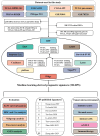
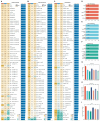
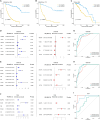
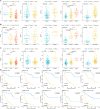
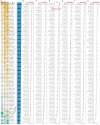
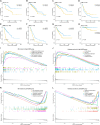
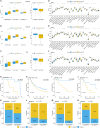
Similar articles
-
Are Current Survival Prediction Tools Useful When Treating Subsequent Skeletal-related Events From Bone Metastases?Clin Orthop Relat Res. 2024 Sep 1;482(9):1710-1721. doi: 10.1097/CORR.0000000000003030. Epub 2024 Mar 22. Clin Orthop Relat Res. 2024. PMID: 38517402
-
Interplay between tumor mutation burden and the tumor microenvironment predicts the prognosis of pan-cancer anti-PD-1/PD-L1 therapy.Front Immunol. 2025 Jul 24;16:1557461. doi: 10.3389/fimmu.2025.1557461. eCollection 2025. Front Immunol. 2025. PMID: 40777041 Free PMC article.
-
Does the Presence of Missing Data Affect the Performance of the SORG Machine-learning Algorithm for Patients With Spinal Metastasis? Development of an Internet Application Algorithm.Clin Orthop Relat Res. 2024 Jan 1;482(1):143-157. doi: 10.1097/CORR.0000000000002706. Epub 2023 Jun 12. Clin Orthop Relat Res. 2024. PMID: 37306629 Free PMC article.
-
Systemic treatments for metastatic cutaneous melanoma.Cochrane Database Syst Rev. 2018 Feb 6;2(2):CD011123. doi: 10.1002/14651858.CD011123.pub2. Cochrane Database Syst Rev. 2018. PMID: 29405038 Free PMC article.
-
Diagnostic test accuracy and cost-effectiveness of tests for codeletion of chromosomal arms 1p and 19q in people with glioma.Cochrane Database Syst Rev. 2022 Mar 2;3(3):CD013387. doi: 10.1002/14651858.CD013387.pub2. Cochrane Database Syst Rev. 2022. PMID: 35233774 Free PMC article.
References
-
- Gusyatiner, O. & Hegi, M. E. Glioma epigenetics: from subclassification to novel treatment options. Semin Cancer Biol.51, 50–58. 10.1016/j.semcancer.2017.11.010 (2018). - PubMed
-
- Miller, K. D. et al. Cancer statistics for adolescents and young adults, 2020. CA Cancer J. Clin.70, 443–459. 10.3322/caac.21637 (2020). - PubMed
-
- Close, A. G., Dreyzin, A., Miller, K. D., Seynnaeve, B. K. N. & Rapkin, L. B. Adolescent and young adult oncology-past, present, and future. CA Cancer J. Clin.69, 485–496. 10.3322/caac.21585 (2019). - PubMed
MeSH terms
Substances
Grants and funding
LinkOut - more resources
Full Text Sources
Medical

